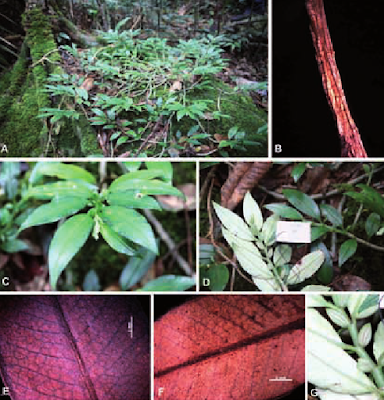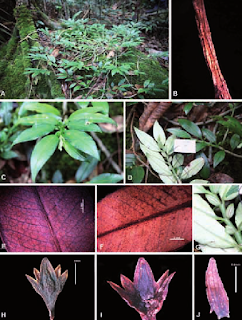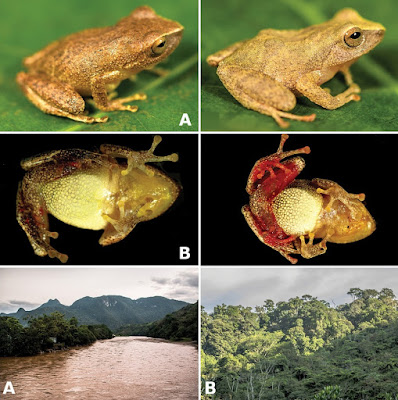[Most Recent Entries] [Calendar View]
Friday, August 26th, 2016
| Time | Event | ||||||
| 3:27p | [Arachnida • 2016] The Goblin Spider Genus Ischnothyreus (Araneae, Oonopidae) in Java and Sumatra Abstract The genus Ischnothyreus Simon, 1893 from Java and Sumatra is revised with the description of seven new species from Java (I. baltenspergerae sp. nov., I. bauri sp. nov., I. gigeri sp. nov., I. ligulatus sp. nov., I. nentwigorum sp. nov., I. sigridae sp. nov., I. ujungkulon sp. nov.) and eight from Sumatra (I. ascifer sp. nov., I. concavus sp. nov., I. habeggeri sp. nov., I. haymozi sp. nov., I. lucidus sp. nov., I. marggii sp. nov., I. microphthalmus sp. nov., I. obscurus sp. nov.). Furthermore the male of I. serpentinum Saaristo, 2001 is described for the first time and the female redescribed in detail. Special morphological features of Ischnothyreus males and females are described and discussed, such as peculiar trochanter projections, partially fused pedipalp segments, processes on the cheliceral fang base in males and external and internal genitalic structures in females. This work is part of the Planetary Biodiversity Inventory (PBI) of goblin spiders (http://research.amnh.org/oonopidae/). Keywords: Araneae, Genitalia, morphology, PBI Miguel Richard, Werner Graber and Christian Kropf. 2016. The Goblin Spider Genus Ischnothyreus (Araneae, Oonopidae) in Java and Sumatra. Zootaxa. 4151(1); 1-99. DOI: 10.11646/zootaxa.4151.1 | ||||||
| 3:42p | [Botany • 2014] Argostemma glabra • A New Species (Rubiaceae) from Vietnam
Argostemma glabra Joongku Lee, T.B. Tran & R.K. Choudhary, a new species of Rubiaceae from Khanh Hoa Province of Vietnam is described and illustrated. It is morphologically similar to A. apiculatum, but differs in its creeping habit, 4–6 flowered inflorescence, bigger and triangular bracts, smaller peduncle, bigger and broadly triangular calyx lobes, and non-apiculate and smaller corolla. Color photographs, a line drawing and a taxonomic key are provided to facilitate identification. Ritesh Kumar Choudhary, Tran The Bach, Do Van Hai, Bui Hong Quang, Sang-Hong Park, Changyoung Lee and Joongku Lee. 2014. Argostemma glabra (Rubiaceae), A New Species from Vietnam. Annales Botanici Fennici. 50(4); 258-262. DOI: 10.5735/086.050.0408 | ||||||
| 3:59p | [Herpetology • 2011] On Recent Sightings of A Little-known south Indian Toad, Duttaphrynus hololius (Günther, 1876) with Notes on Its Morphological Characterization and Ecology Abstract Duttaphrynus hololius (Günther, 1876), a rarely-sighted, endemic toad species known only from a few documented specimens was re-sighted in Devarabetta, Krishnagiri dt., Eastern Ghats hill range, Tamil Nadu state, southern India. Data from our four live, uncollected conspecifics are provided to update and expand the external morphological characterization of this species. In-life colouration and baseline ecological data are provided herein for the first time. Possible extent of distribution of this species and some issues regarding its sighting records in the past are also discussed. Keywords. In-life colouration, expanded characterization, natural history, distribution. Sumaithangi Rajagopalan Chandramouli, Sumaithangi Rajagopalan Ganesh and Nagarajan Baskaran. 2011. On Recent Sightings of A Little-known south Indian Toad, Duttaphrynus hololius (Günther, 1876) with Notes on Its Morphological Characterization and Ecology. Herpetology Notes. 4; 271-274. http://www.asiannature.org/sites/default/f | ||||||
| 4:27p | [Herpetology • 2016] Pristimantis pulchridormientes • A New Species of Frog of the Genus Pristimantis (Anura, Craugastoridae) from Tingo María National Park, Huánuco Department, central Peru
Abstract A new species of Craugastoridae frog encountered from 1000–1700 m in elevation in the premontane forests of the Peruvian central Andes is described. The new species is similar in appearance to many other species of Pristimantis, but is easily distinguishable from these species by having bright red coloration on the groin, posterior surface of thighs, and shanks. The new species is only known for two localities 27 km apart in the Huánuco Region. Keywords: Amphibian, Andes, Craugastoridae, premontane forests, taxonomy
Pristimantis pulchridormientes sp. n. Proposed standard English name: Sleeping Beauty Rain Frog Proposed standard Spanish name: Rana de lluvia de la Bella Durmiente Diagnosis: The new species is distinguished by the following combination of characters: (1) skin on dorsum finely shagreen, that on venter areolate, discoidal fold absent, dorsolateral folds absent; (2) tympanic membrane and tympanic annulus distinct, weak supratympanic fold covering dorsal and posterior edges of tympanum, horizontal diameter of eye 3x the diameter of tympanum; (3) snout acuminate in dorsal view, truncated and posteroventrally inclined in lateral view, canthus rostralis weakly concave in dorsal view, angular in lateral view, loreal region concave, rostral papilla absent; (4) upper eyelid lacking tubercles, cranial crests absent; (5) dentigerous process of vomers absent; (6) males with vocal sacs and vocal slits, nuptial excrescences absent; (7) finger I and finger II of equal length, fingers II and III bearing rounded discs about 1.5 times wider than digits, finger IV bearing a rounded disc about twice as wide as its digit; (8) fingers with narrow lateral fringes; (9) antebrachial tubercle absent; (10) ulnar and tarsal tubercles absent (11) inner metatarsal tubercle oval twice as long as round outer metatarsal tubercle, low supernumerary plantar tubercles at the base of toes I, II, and III; (12) toes with narrow lateral fringes, webbing absent, toe V longer than toe III; (13) in life, males with dorsum creamy yellow or yellowish brown with dark blotches; canthal stripe creamy white extending to the orbits; throat yellow; belly creamy white; groins, posterior surfaces of thighs, and shanks bright red; iris cream with brown flecks; (14) SVL in adult males 19.1–21.9 mm; SVL in females unknown.
Etymology: The name is composed of two words in Latin, “pulcher” which means beautiful, and “dormientes” = sleeping, in reference to the chain of mountains located within Tingo María National Park, above the city of Tingo Maria, locally known as Sleeping Beauty (Bella Durmiente), because it looks like a sleeping reclined woman (Figure 6A). Germán Chávez and Alessandro Catenazzi. 2016. A New Species of Frog of the Genus Pristimantis from Tingo María National Park, Huánuco Department, central Peru (Anura, Craugastoridae). ZooKeys. 610: 113-130. DOI: 10.3897/zookeys.610.8507 Resumen: Describimos una nueva especie de rana de la familia Craugastoridae de los bosques premontanos de los Andes centrales peruanos, los especímenes fueron encontrados entre los 1000 – 1700 metros de elevación. Esta especie es similar en apariencia a muchas especies de Pristimantis, sin embargo es facilmente distinguible por tener ingles, superficie posterior de los muslos y de la tibia rojo brillante. La nueva especie es conocida solo de dos localidades en la Región Huánuco, ambas separadas por alrededor de 27 km. Palabras clave: Anfibio, bosques premontanos, Craugastoridae, Andes, taxonomía |
| << Previous Day |
2016/08/26 [Calendar] |
Next Day >> |












